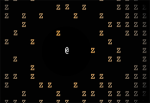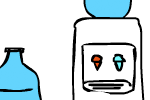We are attracted to contrast. Not attracted really – it’s more like we’re hard wired to pay attention to it. Like contrast is a bug in the neural network that runs our attention system. We can’t help but ascribe special importance to the object that contrasts with it’s neighbors.
Now this bug can be useful. If your want someone to pay attention to something to learn something you present it in a way that contrasts. Contrast is used in Art, Film, Literature, Games in profound ways.
But it’s also used to excuse evil and to ignore good. If someone is good 99% of the time but commits one act of evil – the contrast is such that everyone looks at that one act. Conversely if someone is 99% bad and does one good thing – contrast forces you to observe that one good act.
Since the rise of Donald Trump I’ve heard the contrast excuse countless times. It goes like this: “Well he may be a terrible son of a bitch – but he’s right about not ignoring rural workers. Well he says stupid things all the time, but he did say something smart about earmarks. Etc.
(Coincidentallu many of these same people who make this excuse talk about Obama in the same way – i.e. Sure he was eloquent and all, but he lied that one time about Obamacare. Sure he was level-headed and all, but he blew it on Bengazi)
What this does show is an astounding lack of objectivity. If something is 99% bad and 1% good – you dont want it! As good as that 1% is the rest is garbage or worse. All decisions are important. Good must be pursued every day.
I think this is how abusive relationships work. The abused party becomes addicted to that 1% – because it’s so marvelous when it does occur. Whenever the abused is ready to quit they think of that one good thing that happened a few months ago and stay on for the next one.
This is probably a problem in good relationships too. You may have a partner who is always kind and caring, but does one selfish thing. And then that bad moment – by nature of it’s contrast – lodges in you brain, ready to be pulled up the next time things get hard.
Okay so I’m presenting this in a simplistic form. In reality “good” and “bad” are exceptionally difficult to define, and every act is somewhere on 20 different continuums. But it’s a principle worth considering.






